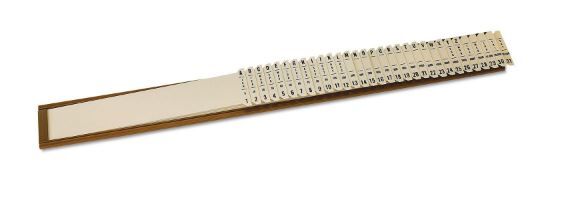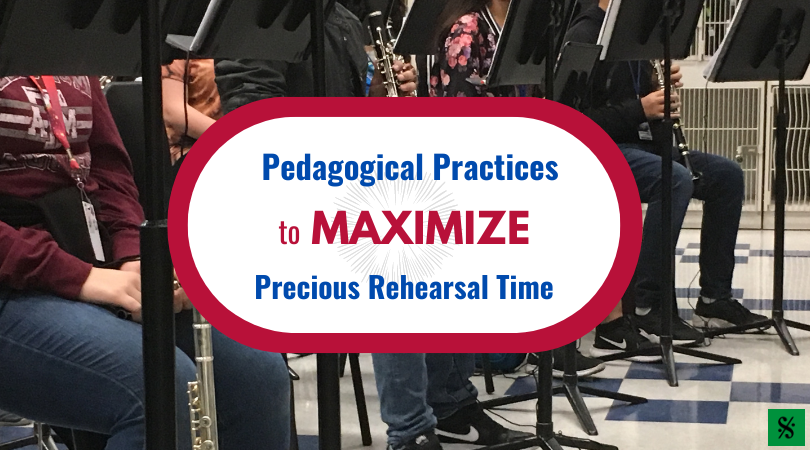Several years ago, the middle school band directors in our state decided to get together and share teaching tips and strategies with each other in order to improve all of our programs. After the success of the first meeting, we decided to continue this on a regular basis and we now do this 2-3 times a year for the past 10 years. These “best practices” gatherings have been very informative, and we always walk away with several new ideas to try in our classrooms. It is refreshing to hear other directors sharing their experiences in a positive and collaborative environment.
If the directors in your state don’t do something like this, I would highly encourage it. Everyone, no matter their years of experience, has learned valuable lessons they can share with others (good and bad). One of the other benefits to these types of meetings is hearing from educators with different educational backgrounds, different levels of teaching experience, and different teaching situations. We often learn more from directors in totally different situations to the ones in which we are the most familiar.
It doesn’t have to be a formal meeting where someone prepares a formal presentation on a certain topic in which they are an “expert” (similar to our state music educator conferences or Midwest). It can be as simple as coming up with a topic and having someone facilitate a discussion on recruiting, retention, brass techniques, rhythm, etc. We have also had sessions where folks simply share resources they have found useful in their classrooms. The meetings we seem to learn the most from are the ones we call “Tricks of the Trade!”
Each year at our All-State Band clinic, we gather as a group of middle school band directors for our “Tricks of the Trade” session. This is the best practices meeting where everyone comes prepared to share a trick of the trade they have used with success in their band rooms. The following is a list of 5 tricks of the trade in the organizational arena that have been shared and our directors have found useful.
1. Music sorter stick
One of our directors shared a neat way to sort music back into score order without multiple piles of different parts scattered around them on the floor. If you go online and search for Plastic Sort All, you will find the tool they use for this trick.
The director then used a label maker and created labels for each instrument in score order and attached them to the sorter in place of the letters and numbers on the end.

Now, you can sort a piece while sitting at your desk and do it quickly without the multiple piles all around.

 
2.Lines/tape on the floor for easy chair placement
One director, with a tile floor, mentioned they would check with their maintenance folks and find out when the wax would be stripped from the floor. At that point, they would tie a string to their director stand and measure the distance to the first row. They would then attach a sharpie to the other end of the string and use it like a compass to draw arcs on the floor. Once the floor was waxed, the lines never came up. Gaffers tape also works on carpeted floors. At the end of each class, the director would have everyone look down to make sure the front chair legs were on the arc. Clean neat rows in seconds at the end of each period.
3. Chair & stand clean up tip
If you are tired of moving furniture each day to ensure a clean floor and a neat room, enlist the help of your students to rack and stack for you. This director made a game of it. After instruments were safely stored in the cases at the end of the day, play this game to see how quickly the job would get done.
- The first day was showing them how to correctly and neatly rack and stack the chairs and music stands.
- The second day and following days would be timed to see if they could beat their record time.
- An added bonus, use a recording of Flight of the Bumblebee to encourage this to happen quickly and then write the time on the board at the end of the clean-up.
- This teacher said his kids lowered their time to 18 seconds to get 30 chairs and stands rack and stacked at the end of class!
4. Band Binders
This is simply a way to help your students keep their music and materials neat and orderly. Buy inexpensive 1” binders, 5 tab dividers, a pencil pocket, pencil, highlighter, extra paper and page protectors for your students. Have them put the binder together in class and show them exactly what you expect.
Insert a name card in the front cover with the band logo and punch holes in their band method books (you can purchase hole punches that will punch 75 pages at a time and this will work for most method books, except some percussion books) so that everything can be in one place.
Have periodic notebook checks to see if everyone has their materials and if they are stored neatly.
5. SMART Band Student.
Quick and clean set of expectations for your band students. A SMART band student is one who is:
Silent
Marks Mistakes
Attentive
Respectful
Team Player
I hope these organizational “Tricks of the Trade” which have been shared over the years have been helpful and might come in handy for your program too!
Mike Doll is a graduate of Furman University (BM) and Winthrop University (MM) in South Carolina. He is the band director at Palmetto Christian Academy and the East Cooper Homeschool Band in Mount Pleasant, SC. He has been a middle school band director for 22 years (15 years in public schools and 7 years in private/homeschool). He is also the lead teacher for mentoring in the South Carolina chapter of Phi Beta Mu, working with young middle school band directors throughout the state.
Related Reading:
Habits of a Successful Middle School Band Director
Organizing a Band DIRECTOR Calendar – 3 Tips
Small Band Programs: Strategies for Success
5 Steps to Recruit More Tuba Players
If you would like to receive our weekly newsletter, sign up here.
Don’t forget to like us on Facebook too!
Learn. Share. Inspire.
BandDirectorsTalkShop.com











Leave a Reply
You must be logged in to post a comment.